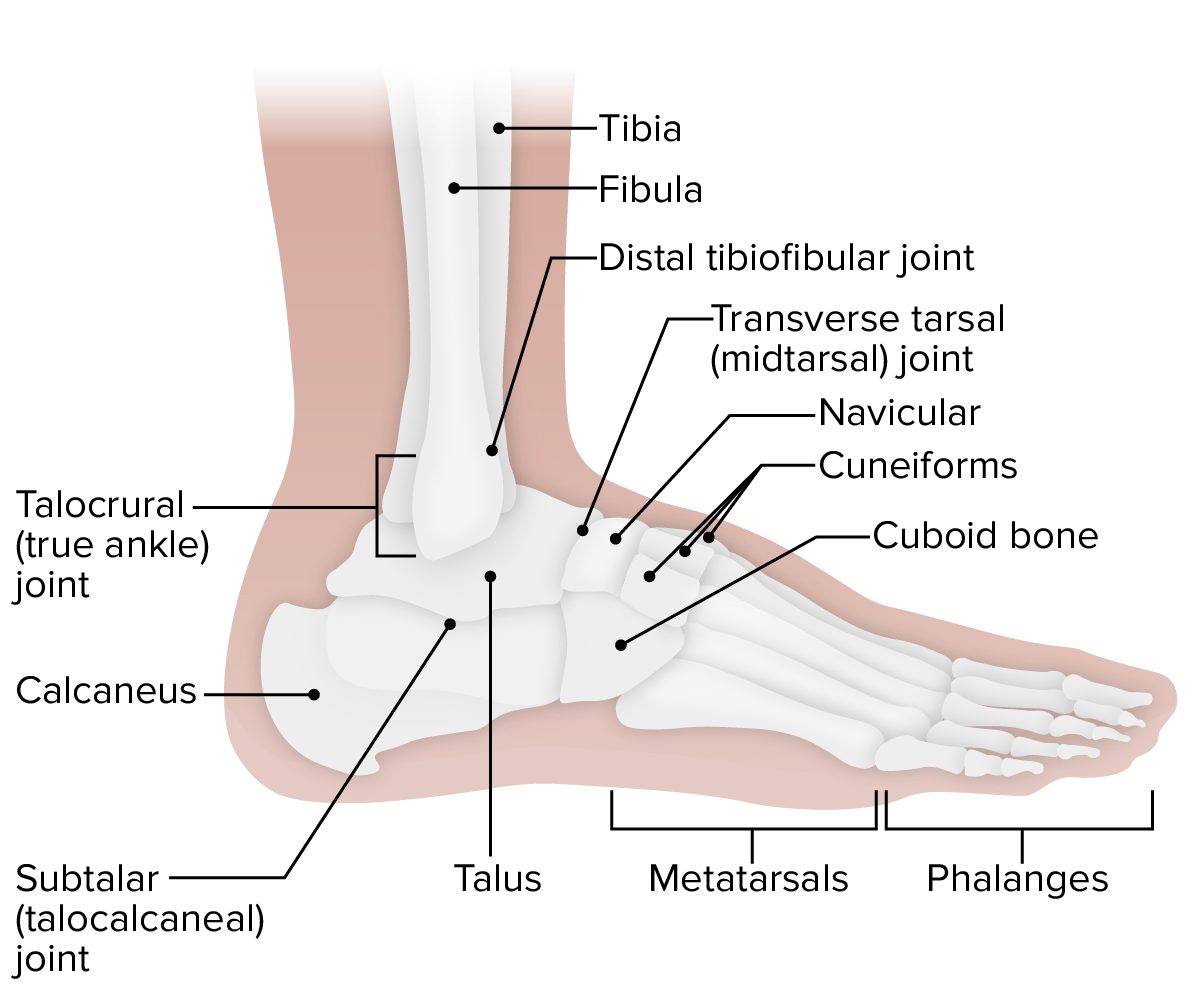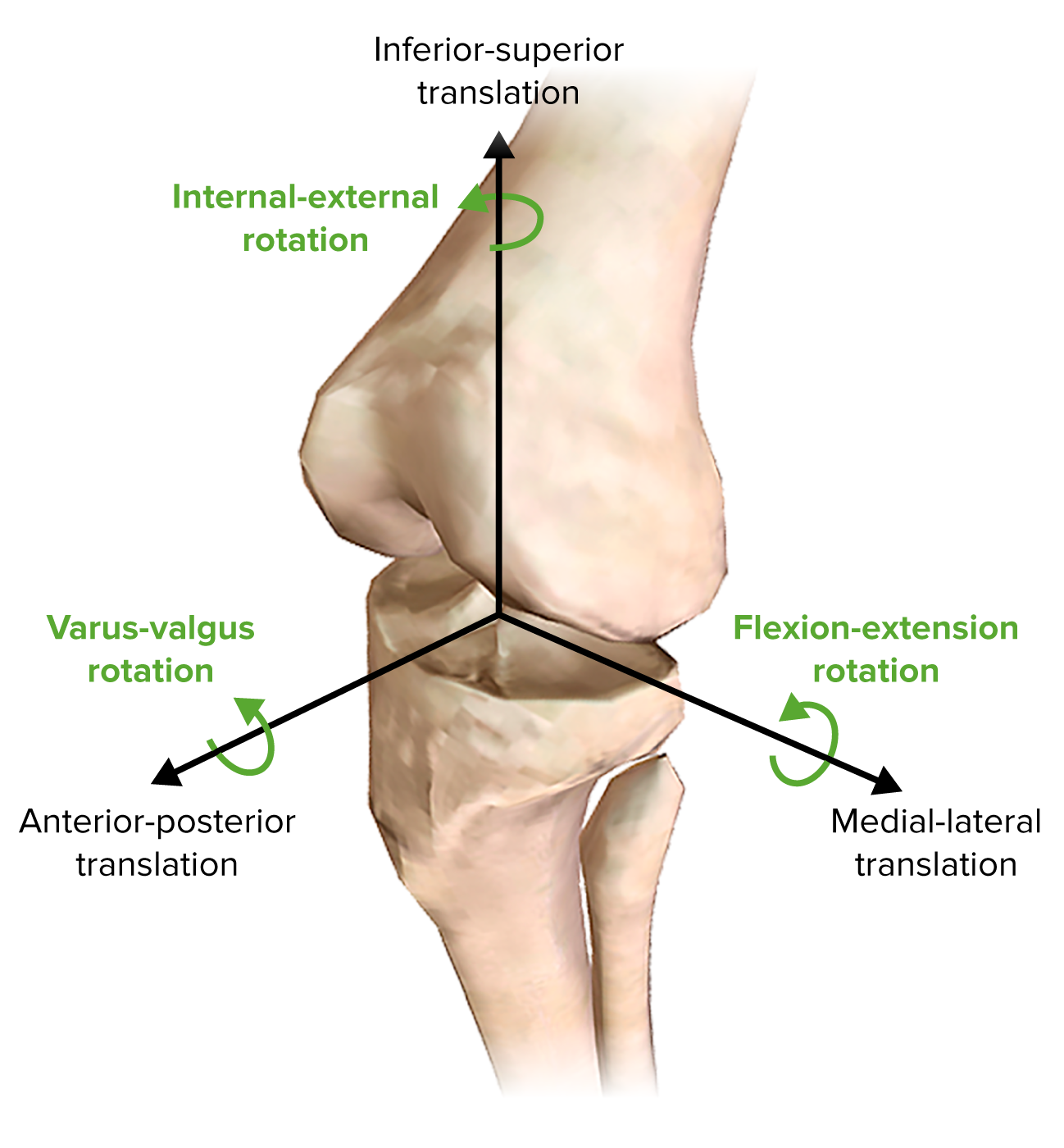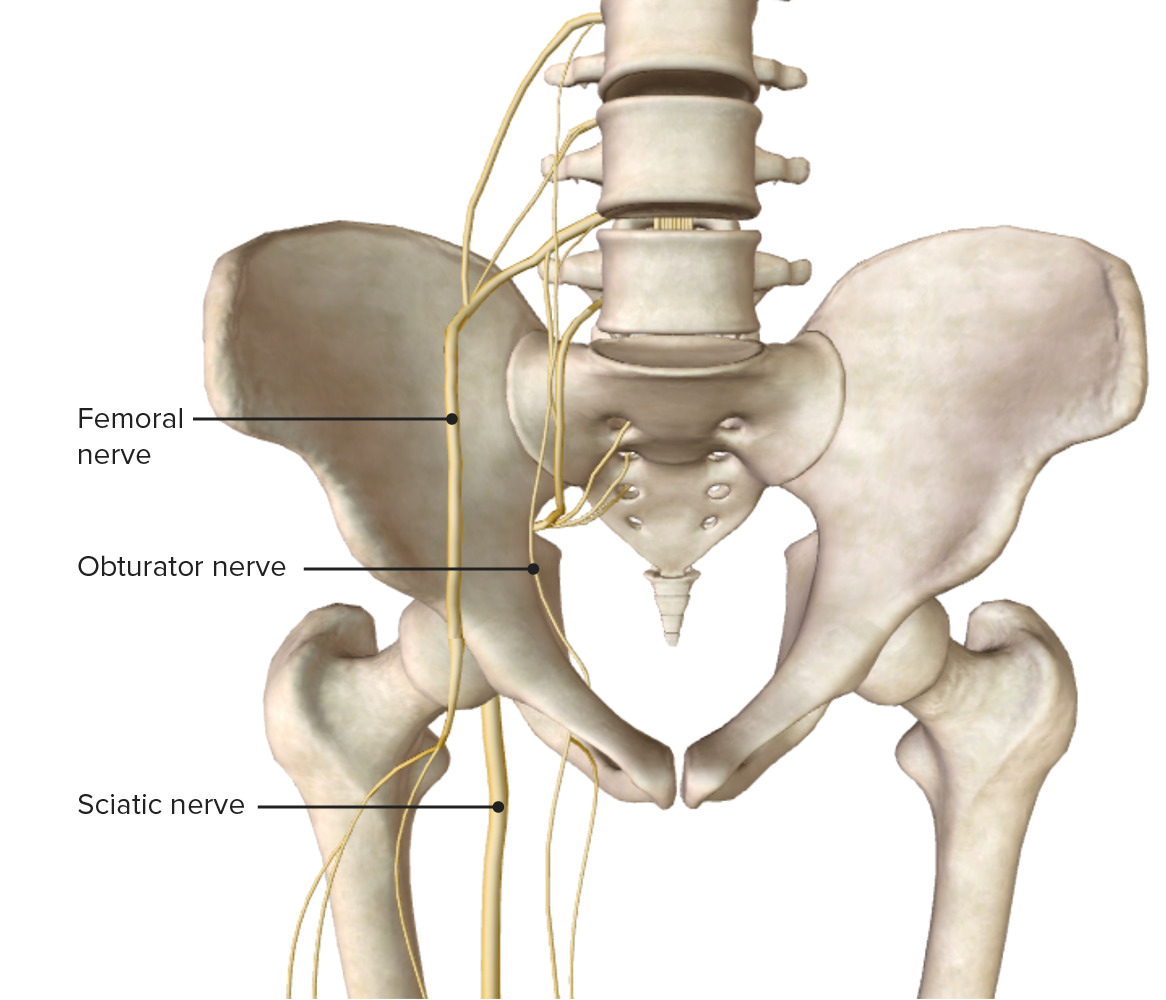Playlist
Show Playlist
Hide Playlist
Movements of the Lower Limbs
-
Slide Movements of the Lower Limb.pdf
-
Download Lecture Overview
00:01 So now let's have a look at the range of movements that are possible at the lower limb. 00:06 Let's start off by looking at the hip joint. 00:08 So the hip joint member is between the head of the femur and the acetabulum. 00:13 And the movement that can occur here is one of flexion and one of extension. 00:17 So moving the lower limb forward, we have flexion and moving it posteriorly, we have extension, and that's going through the sagittal plane of the body. 00:27 Also moving across the coronal plane, we have adduction when you're bringing the limb towards the midline, and abduction. 00:34 Again, within the coronal plane, but you're moving away from the midline. 00:39 If we then have a look at the hip joint, again, we have external rotation where you move the hip joint or laterally. 00:46 So you've rotated away from the body important when you make a beginning part of your stride to move the leg externally rotated orientation. 00:56 And then the opposite of that is internal rotation when you swing your leg more into the midline, or medially. 01:02 And that's internal rotation or medial rotation. 01:05 So you can externally rotate your hip and you can medially rotate your hip. 01:09 And these are important as you're walking along. 01:12 So if we move to the knee joint, then we have flexion of the knee joint where the knee joint actually moves posteriorly. 01:18 And then from this posterior position, again, it's within the coronal plane. 01:22 But now we move the leg forward, so it lays in a straight line with the femur, we have extension of the leg. 01:31 So flexion and extension are both occurring at the knee joint of the leg. 01:35 So flexing it backwards and then extending it forwards occurring within the coronal plane. 01:42 Now if we have a look at the knee joint, again, you can see there's a very subtle amount of rotation that can occur. 01:48 So similarly, where we looked at the hip joint and had lateral and medial rotation. 01:52 Here you can see we have lateral rotation of the knee joint. 01:56 And then we can also have medial rotation of the knee joint as well. 01:59 And again, this is important when you're walking. 02:02 So as your knees and your legs don't hit each other when you are walking, you can swing your limbs out and then bring them back together again, as you end up walking on one leg at a time. 02:13 If we then have a look at movement of the ankle joint, so we can dorsiflex or we can lift the foot up. 02:18 And then we can plantarflex if we're going to stand on our tiptoes. 02:21 So we have dorsiflexion where we lift our toes up, and plantarflexion where we push our toes to the ground. 02:27 And therefore we lift up our heel and we walk on tip toes. 02:30 If we have a look at the subtalar joints, the joints we mentioned a few moments ago, then what happens here is inversion very much when you lift up your big toe. 02:40 So you've rested all of your weight on the lateral aspect of your foot run alongside the big toe. 02:46 And then eversion is when you do the opposite and you lift up your fifth digit and you rest your balance on your first digit your big toe, so eversion and inversion. 02:57 And then finally movement of the toes similar to what can happen in your fingers. 03:01 We have abduction, where we're moving our toes away from the midline. 03:06 This really does only happen at the margins of our phalanges. 03:09 So our first and our fifth digits can do this. 03:12 And then they can adduct as well where they're brought back into the midline. 03:16 So there's quite a range of movements that can happen when you splay out your big toe and your little toe, but not half as much as what you can do with your digits in your hand. 03:26 And then finally, you can do some flexion and extension of your toes. 03:31 So again, when you're trying to pushing your toes onto the surface of your shoe, you've got flexion and then if you try and touch the top of your shoe with your toes, you're extending your toes in that aspect. 03:43 So you can flex and extend your toes in those two directions. 03:47 So that's the end of this real kind of tore through the bones of the lower limb. 03:51 There's lots of bones here. 03:53 There's lots of bony structures that lie on each of these bones. 03:56 And it's important you do recognize what they are, mostly because they form important muscle attachment sites, which we'll look to in the next few lectures.
About the Lecture
The lecture Movements of the Lower Limbs by James Pickering, PhD is from the course Joints of the Lower Limbs.
Included Quiz Questions
What movements are possible with the hip joint? Select all that apply.
- Flexion
- Extension
- Adduction
- Abduction
- External torsion
What knee joint movements are possible? Select all that apply.
- Flexion
- Extension
- Abduction
- Adduction
- Internal torsion
Customer reviews
5,0 of 5 stars
| 5 Stars |
|
5 |
| 4 Stars |
|
0 |
| 3 Stars |
|
0 |
| 2 Stars |
|
0 |
| 1 Star |
|
0 |






